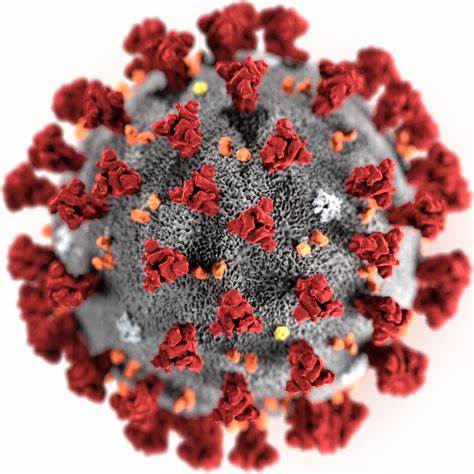By the CUJ
MISSION, Ore. – Yellowhawk Tribal Health Center reminds the Tribal community that the disruptions in our daily lives are challenging, but important to slowing down the spread of COVID-19. As of March 20, there had been 88 confirmed coronavirus cases responsible for three deaths in Oregon.
More than 11,000 people had died in the pandemic as of March 20.
In nearby Washington there had 1,276 cases and 74 deaths. Across the United States there had been 16,489 cases and 219 deaths.
Yellowhawk relies on the Oregon Health Authority (OHA) and the Centers for Disease and Prevention for its information about COVID-19.
Generally speaking, Yellowhawk reminds Tribal members that this new coronavirus often causes mild illness but, in some people, can cause severe illness in the lungs, and, in rare cases, it can cause death.
People who are ill with the virus may have a fever, cough and difficulty breathing.
Most people get better by staying home, resting and treating their symptoms.
As with other coronaviruses, signs of COVID-19 usually show up 2–14 days after a person is exposed to the virus.
There currently is now vaccine for COVID-19.
According to the CDC, about 80 percent of people who have COVID-19 will have mild to moderate flu-like symptoms, like a fever and cough.
The CDC notes that if the symptoms are not severe enough to need medical treatment, these individuals should stay home, rest and monitor their symptoms for care.
People who need non-emergency medical care should call their health care provider before showing up at a clinic.
If they are physically able, individuals who need emergency care should tell 911 and the hospital about any known exposure to someone with COVID-19 and travel to any affected areas.
“We don’t know the mortality rate at this time. The situation changes daily,” states a Yellowhawk information statement. “Older adults and people with underlying conditions can stay safe and healthy if they take steps to protect themselves. In addition to taking everyday precautions, these individuals should avoid public gatherings, people who are sick, and non-essential air travel.”
Early information suggests that older adults and people with underlying health conditions may have a higher risk of severe illness. Underlying medical conditions that may increase the risk of serious COVID-19 for individuals of any age include:
- Lung disease including asthma or chronic obstructive pulmonary disease (chronic bronchitis or emphysema) or other chronic conditions associated with impaired lung function or that require home oxygen
- Compromised immune system (immunosuppression) (e.g., seeing a doctor for cancer and treatment such as chemotherapy or radiation, receiving an organ or bone marrow transplant, taking high doses of corticosteroids or other immunosuppressant medications, HIV with a CD4 count <200)
- Blood disorders (e.g., sickle cell disease or on blood thinners)
- Chronic kidney disease
- Chronic liver disease
- Current or recent pregnancy (in the last two weeks)
- Endocrine disorders (e.g., diabetes)
- Metabolic disorders (such as inherited metabolic disorders and mitochondrial disorders)
- Heart disease (such as congenital heart disease, congestive heart failure and coronary artery disease)
- Neurological and neurologic and neurodevelopment conditions
According to experts, COVID-19 infection appears to be spread when ill people cough or sneeze. If they cough on something or cough on their hand and then touch something, the virus might be on that object. If someone then touches that object a short time later, and then touches their eyes without cleaning their hands, that could lead to infection as well. Cleaning often-touched surfaces with disinfectant helps prevent this.
Yellowhawk says the best way to protect yourself is to avoid exposure to the virus. There are easy steps you can take to prevent the spread of COVID-19 and many types of illness – including the flu – especially to older adults and those with underlying chronic diseases:
- Cover your coughs and sneezes with a tissue and then throw the tissue in the trash.
- Wash your hands often with soap and water for 20 seconds. If soap and water are not readily available, use an alcohol-based hand sanitizer that contains at least 60% alcohol.
- Avoid close contact with people who are sick.
- Governor Kate Brown has ordered the implementation of community social distancing measures recommending cancellation of events hosting more than 10 persons in high risk populations.
- Avoid touching your eyes, nose and mouth with unwashed hands.
- Clean and disinfect surfaces that are often touched.
- Avoid large crowds.
- Follow CDC’s travel guidance.
“These measures are intended to help ‘flatten the curve’ or slow the number of people who are ill at any given time to ensure our health systems continue to function well when we need them most,” Yellowhawk’s message states.
Yellowhawk noted that for healthy people, there isn’t much evidence that wearing a mask around town is effective or necessary. People who are ill with fever and a cough might have the flu or COVID-19. They are the ones who should wear a surgical mask to prevent the spread of COVID-19 germs to others.
Yellowhawk says your healthcare provider will determine whether you need to be tested for COVID-19 or other illnesses.
Commercial labs are receiving specimens for COVID-19 testing at clinicians’ discretion, including in the outpatient setting.
According to Yellowhawk, several health insurance companies will waive co-pays, co-insurance, and deductibles for COVID-19 testing.
If you have Oregon Health Plan and you need to be tested for novel coronavirus (COVID-19), it’s covered. If you need to stay in the hospital because of COVID-19, that’s covered, too.
Testing is available through the Oregon State Public Health Laboratory and a growing number of commercial labs.
“As more testing is done, we expect to find more cases in the community,” the statement from Yellowhawk said.
You can find up-to-date numbers on cases of COVID-19 in Oregon at healthoregon.org/coronavirus.
For now, cases will be described as a “presumptive” until CDC confirms Oregon’s test results. After enough results are confirmed, this extra step will no longer be necessary.
A second test is run at the CDC (Centers for Disease Control and Prevention). If the test at CDC is positive, the case of illness is confirmed.
The steps taken to protect public health remain the same, regardless of whether the case is presumptive or confirmed.
Individuals who may be tested include, among others, those who have fever, cough and difficulty breathing and who have traveled to certain affected regions outside the United States, had close contact with someone diagnosed as having COVID-19, or is hospitalized, has evidence of viral pneumonia and a negative influenza test.
Many people, including young adults taking care of elders, want to know how they can support older family members and people with underlying health conditions. Caregivers should make sure they know what medications your loved one is taking, and see if you can help them have extra on hand.
Caregivers also should monitor food and other medical supplies and make a backup plan and stock up on non-perishable food items to have on hand to minimize trips to the store.
OHA advises that if your loved one is living in a care facility, ask about the health of residents frequently, follow visitor restrictions and know what the protocol of the facility will be if there is an outbreak at the facility.




